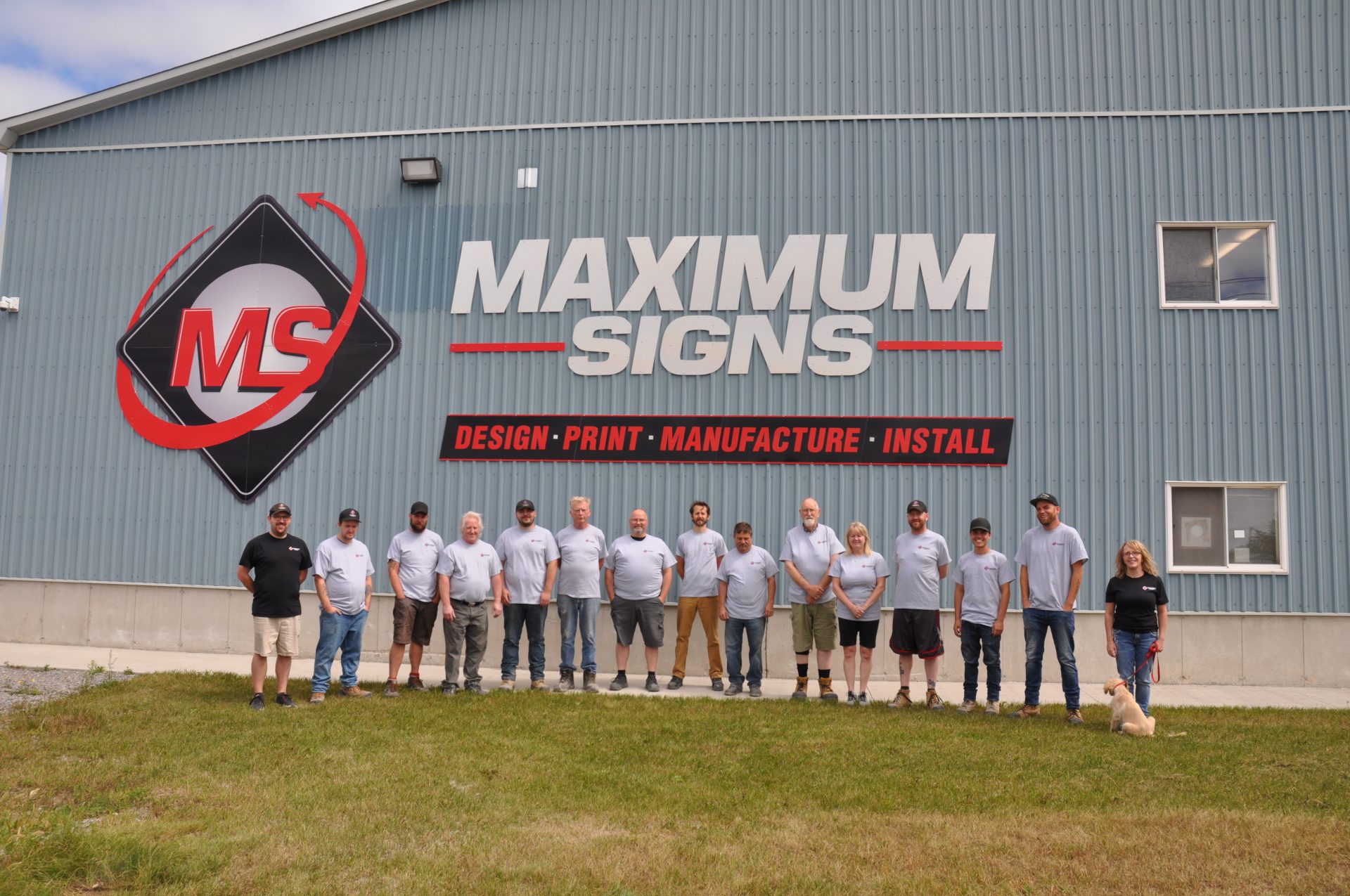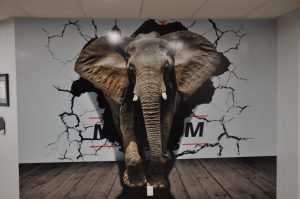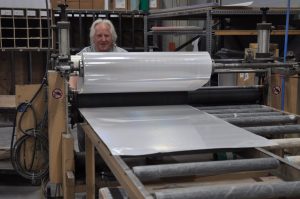
The staff at Maximum Signs. Photos courtesy Maximum Signs
By Courtney Bachar
Maximum Signs was established in 1990, under the name Scugog Signs, in a small garage in Blackstock, Ont. The owner, Ron Haslam, was the only employee at the time, doing all the designing and manufacturing of the signs. It was, and still is, a family-owned and operated business.
The company quickly outgrew the existing location and moved to a new location in Nestleton, Ont. They also started to add some staff to meet the needs of its growing customer base. Three years later, the growth was such that they built a new shop in Pontypool, Ont. They have been there ever since.
Once moving to Pontypool, Haslam decided the name Scugog Signs no longer fit and changed it to Maximum Signs to better reflect the company’s vision.
Maximum Signs is now a state-of-the-art sign manufacturing facility with some of the latest technology in the sign business.
They are a 3M-certified sign manufacturer with more than 30 years of experience producing signs in the industry. With 3M, Maximum Signs is backed with a warranty that gives customers the peace of mind in knowing the signs they are buying look great and will last for many years.
Sign Media Canada recently spoke with Haslam to learn more about the signmaking process, recent projects, and plans for the business.
Sign Media Canada (SMC): What makes your company unique?
Ron Haslam (RH): Our customer service and capabilities are what makes us stand out from all other sign shops. We stock large quantities of 3M reflective and non-reflective materials, posts of all types, mounting hardware, steel, aluminum and wood, as well as most of the highway and construction signs certified for highways in Canada. From the smallest of decals to the largest of panel signs on major highways, all are manufactured in-house. Towns, cities, municipalities, construction companies, developers, federal and provincial governments and retailers across the country we count as our customers. We also sell our products to many smaller sign companies throughout Canada when they need products they are not capable of producing, supplying them with not only finished signs, but also with reflective and non-reflective aluminum and steel sign blanks.
SMC: How large is the facility? (square footage, number of employees, etc.)
RH: Our building was recently enlarged to 22,000 sf and it sits on five acres of land. We have a staff of over 20 employees with a few still off due to COVID.
SMC: What type of signage does your shop primarily install?
RH: Maximum Signs primarily installs traffic signs, construction signs, and custom business signs for towns, cities, construction companies, developers, and private residences on U-channel posts, round posts, and square posts. Traffic signs are the main kind we install, but we are not limited to just signs. We also do airplane graphics, floor graphics, and wall graphics, just to name a few.

An example of wall graphics.
SMC: What type of projects have you been working on recently?
RH: One of our ongoing projects is the TODS program (Tourism Oriented Destination Signage) which we have been doing for over 12 years. The TODS program consists of small to large ¾-in. wooden reflective signage and small- to medium-sized aluminum signage, as well as very large, extruded panel signs with 3M high intensity sheeting. These signs can be found on almost all roads and highways throughout Ontario.
SMC: How much of the sign installation process is handled in-house?
RH: We have our own staff to install most of our signs. At this point, the only signs we produce and do not install are the large, extruded panel signs on the major highways.
SMC: What tools/equipment do you currently use to complete your projects?
RH: For printing, we have a large-format UV printer, two latex printers and one solvent printer, four plotters, as well as two large-format screening presses. Our metal is cut in-house on our 5-ft x 10-ft Trumpf fibre optic laser then sent to our metal deburring machine before going to one of our four laminators. Wood is cut on our CNC router or on our panel saw. Steel and aluminum frames and stands are cut on our iron worker, band saw, or laser, and then welded in our welding department. We also have a metal sheer, brake press, lathe, and mill for various custom jobs.
SMC: What does your planning process involve?
RH: Most signs are standard highway or construction signs that are found in our catalogue and are specified by the Ministry of Transportation. Custom orders usually start with a request for a quote. We will then produce a full-colour proof with all the sign specifications, such as size, colours, material, hole locations, reflectivity level, and quantities. From there, we have the customer sign off on the order and begin the process of manufacturing. Since we carry most materials required to manufacture any type of sign, the turnaround time is about seven days or less. Many times, we get an order in the morning and it is being picked up or shipped the same day, sometimes within hours of receiving the order confirmation.

A staff members works with 3m material.
SMC: How is technology changing your business?
RH: We have found with the invention of better printers capable of producing longer lasting signs (with the proper laminate) we can now use one of our many digital printers to produce short run signage. The use of printers now allows us to have even quicker turn-around times on small run custom signage. Before, we would have to cut artwork, shoot a silkscreen, and then screen the signs. Since drying time can vary with different inks and materials, signs would not be able to be shipped for a day or two after being completed to allow for drying.
SMC: What is the key to staying successful in this industry?
RH: Overall, the most important thing to being successful is customer service. Without customers you won’t be in business. Customers expect you to be prompt, professional, and honest. If you say their order will be done on a specified date, make sure it is. If anything happens that makes it impossible to have the job done on time, be proactive. Let your customer know before they are calling you wondering where their signs are. If a mistake is made, do everything you can to correct it as quickly as possible. Never ignore a problem. The other thing to being successful is to keep up with the times. Always invest in new and better equipment. Times change and so should your equipment.
SMC: What are the future plans for your business?
RH: Going forward, we will be adding more products, increasing our capabilities, adding more staff, some new equipment to increase speed and quality, and it looks like we will need more space again, so another addition is likely in the next few years.
SMC: How has COVID-19 affected your business? How did the shop cope?
RH: When COVID first hit, most towns, cities, and municipalities stopped purchasing. It didn’t look good for the first three months of the pandemic. Even construction was slowed to a crawl. Then, orders for floor graphics, COVID signs, and barriers were being requested. This allowed us to get through the toughest of the pandemic. We modified our production to minimize waste and maximize efficiency. Since then, we are running at full steam and expect things to keep getting better going forward.





